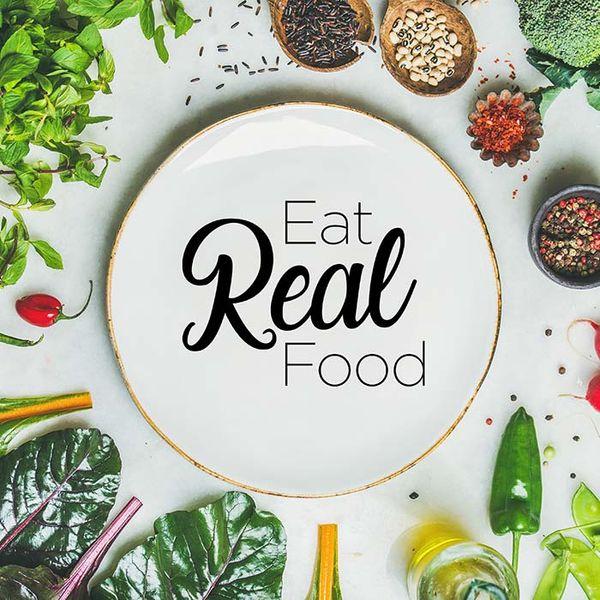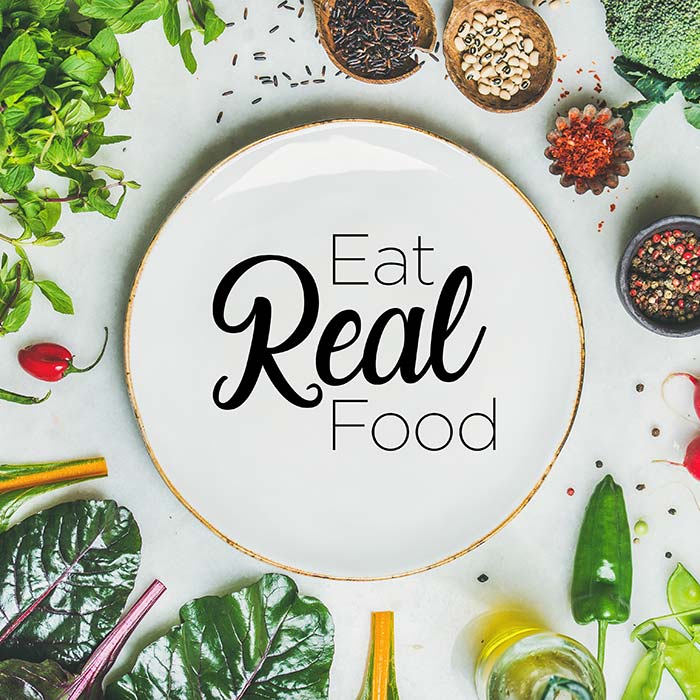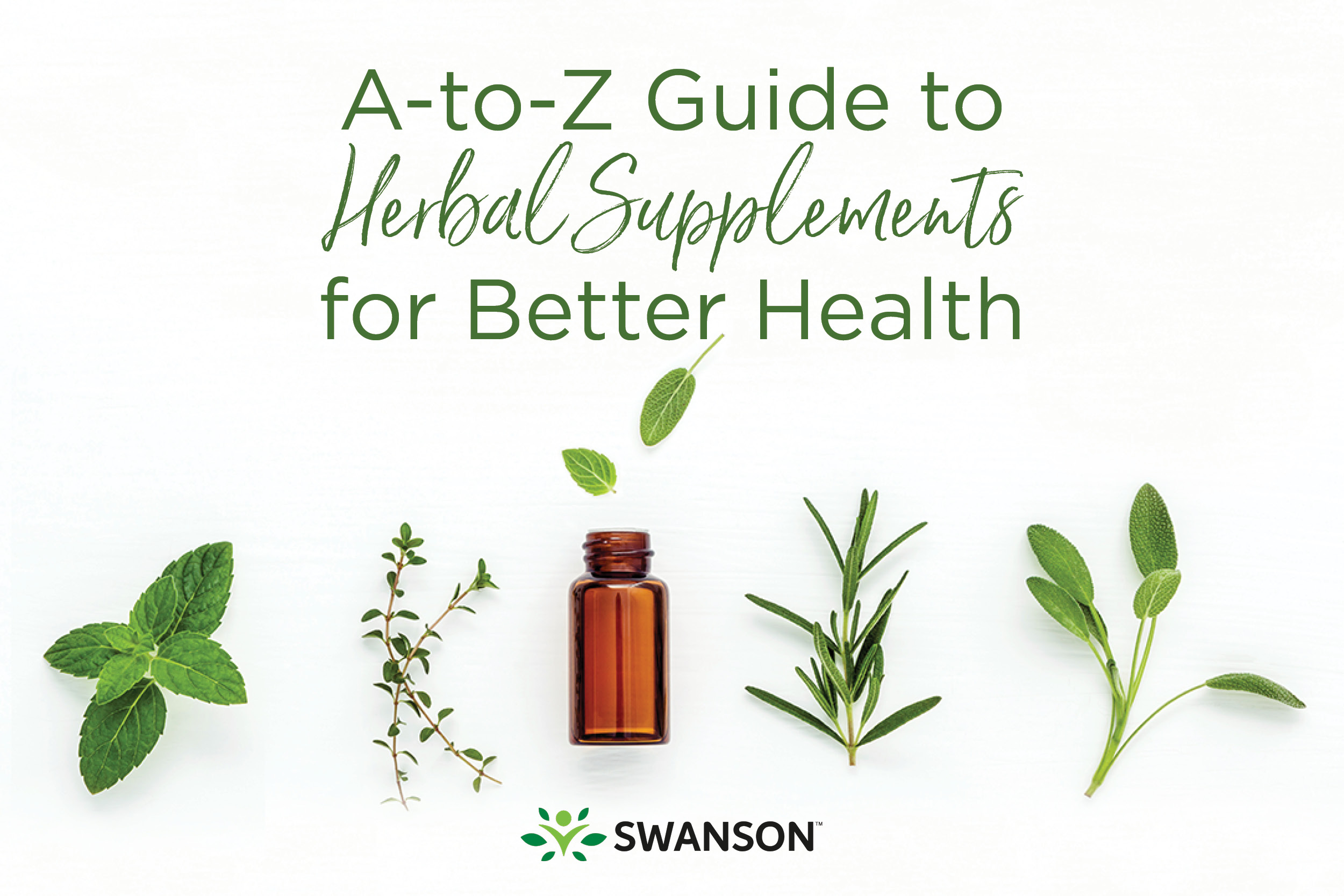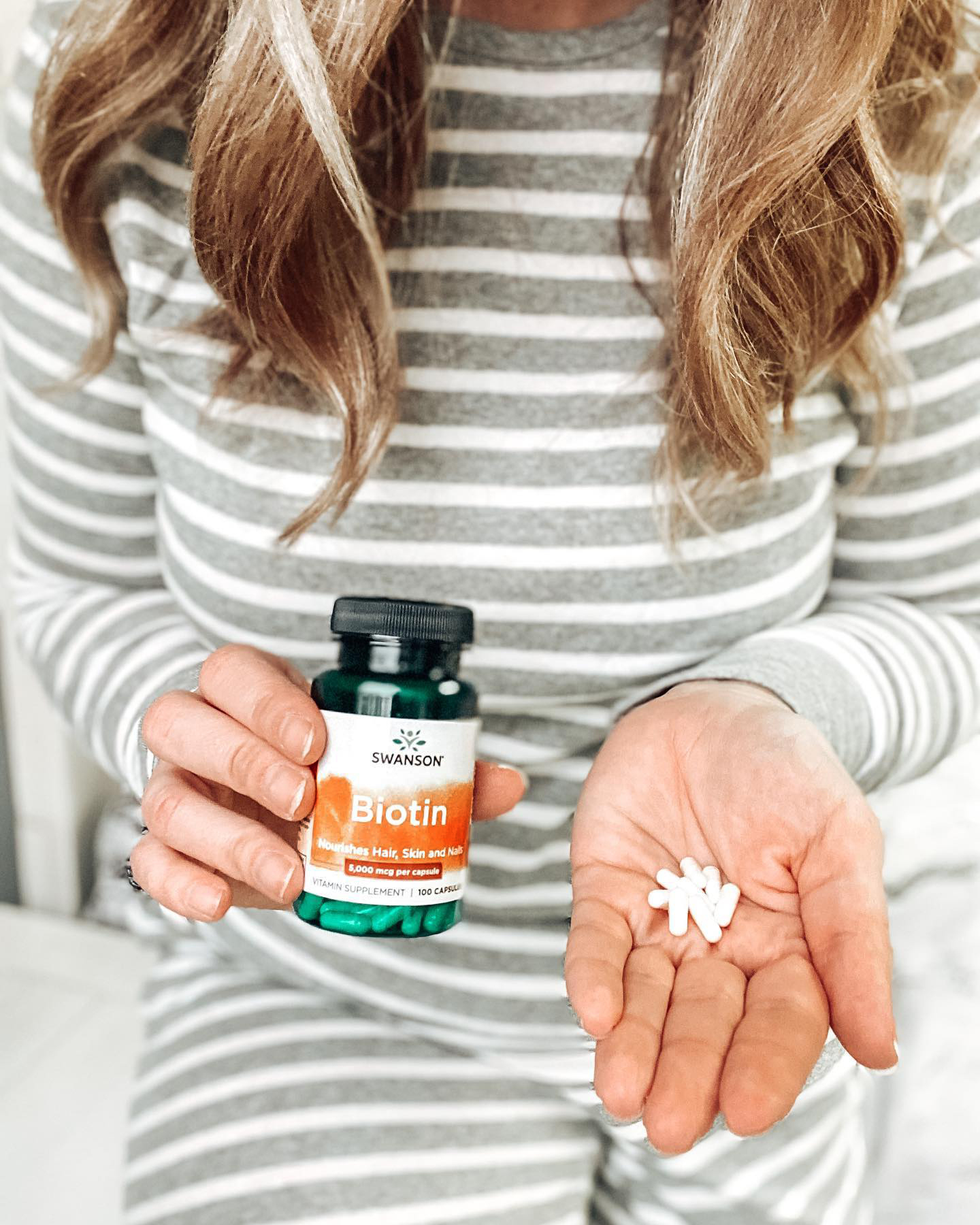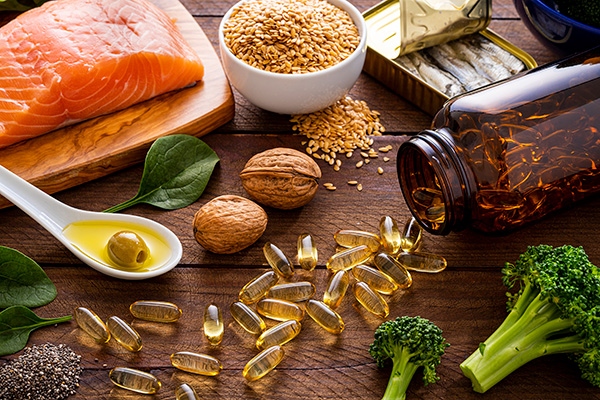When It Comes to Nutritious Foods, Keeping It Real Is Best!
Today, the interest in real foods has become more than just a trend. In fact, you’d be hard-pressed these days to find a nutritionist or dietitian who'd argue that a refined, processed diet is superior to a whole foods diet rich in fruits and vegetables.
But even for the kale smoothie enthusiasts among us, it’s still nearly impossible to get all the nutrients we need through food alone. Unfortunately, only 38% of Americans regularly consume a healthful diet.1
So, what does “real food” then mean for the future of our diets?
Real Food: A Blast From the Past
When it comes to health, today we hear a lot about the move to fresher food and cleaner labels. But in reality, the move to real food is just a resurgence of something that was already important to us long ago.
When vitamins were first discovered, they were isolated from food so we could better identify and study them. As the western world developed, the need to provide better access to nutritious foods, and their inherent vitamins and minerals, developed with it.
Major food companies like Quaker Foods or Tropicana started out with simple missions to take fresh ingredients like oats and oranges to the masses, finding ways to package them, ship them and make their good nutrition more readily available.
Advances in food technology catapulted companies like these, and many others, to more and more novel food products, eventually landing us where we are today with our modern food system.
These days, many food companies are working on ways to return to their roots in real, nutritious foods once again.
Why Real Foods Matter
There's a lot of research on which diet is best for health and which foods should be eaten for optimal health. A few years ago, Dr. David Katz and Stephanie Meller were asked by Annual Reviews, a scientific publisher, to review several diets and elements of diets, including low-fat, low glycemic, low carb, Mediterranean, mixed/balanced (DASH), Paleolithic and vegan.
Katz and Meller’s findings concluded that while there isn’t one "best" diet, there are patterns in eating habits that are proven to be beneficial for health.
They observed that, “the weight of evidence strongly supports a theme of healthful eating while allowing for variations on that theme. A diet of minimally-processed foods close to nature, predominantly plants, is decisively associated with health promotion.”2
The important phrase here is “minimally-processed foods close to nature...” This is what some refer to as real food, or whole foods.
Whole foods are generally derived from plants, unprocessed or unrefined and free from additives or other artificial substances. In some cases, a whole food may be minimally processed or refined while still remaining free from additives or artificial substances.
Fruits, vegetables, nuts, whole grains and legumes are whole foods. When they are not processed, or only minimally processed, they retain much of their complete profile of beneficial phytochemicals and nutrients, plus fiber.
Sometimes, when a food is processed, it can be stripped of its fiber, phytochemicals or other nutrients.
Here are a few reasons why whole foods are important:
- Phytochemicals: Whole foods contain phytochemicals (phytonutrients), which are biologically active plant-food components. Phytonutrients can be powerful antioxidants like lycopene, a red-colored carotenoid found mainly in tomatoes, and anthocyanins, which gives berries like blueberries their deep blue color.3
- Essential Nutrients: Whole foods are nutrient-rich, offering us a simple, easy way to get more nutrients into our diets. According to the U.S. Department of Health and Human Services, the average American doesn’t eat a diet rich in essential nutrients related to good health, noting that this has become a public health concern. Americans under consume the recommended amounts of potassium, dietary fiber, calcium and vitamin D. By eating whole foods, you can increase your consumption of essential nutrients.4
- Fiber and Whole Grains: Many minimally-processed foods are rich in fiber, helping to keep your GI tract on track and providing cardiovascular and weight management benefits. Plus, whole grains retain vitamins, minerals and phytochemicals, which help promote overall health.
- Good Fats and Protein: Processed foods tend to contain more trans fats and saturated fats, the not-so-healthy fats, while whole foods tend to have more of the good-for-you fats like omega-3 essential fatty acids (from both marine and plant sources), plus monosaturated fat from plants. "Good fats" and the protein found in whole foods can help increase satiety, that feeling of fullness. The peptides send signals to the brain and gut that lead to the suppression of MORs (Mu-opioid receptors), resulting in the curbing of appetite.5 Additionally, protein stimulates the production of the hormone that signals satiety, cholecystokinin (CCK).6
Bridging Real Food Gaps with Real Food Supplements
We've heard for decades to get our nutrients from food and to eat daily servings of fruits and vegetables. However, the reality is that this isn’t entirely possible given typical diets, lifestyles and nutrient-depleted soils.
It's therefore important to remember that supplementing your diet with vitamins and minerals can help bridge nutrient gaps.
If you’re determined to get as much of your daily nutritional intake from real food as possible, you likely want a vitamin and mineral supplement that delivers something that looks as close to what you put on your plate as possible, too.
Until recently, it wasn’t as easy as just going out and buying a real food multivitamin. But, with continuing research on nutrient-dense foods and improvements in harvesting and concentration technologies, it's now possible to do just that: buy a multivitamin that isn’t synthetic and is sourced right from real foods.
Let’s break down the key things to look for when buying a real food supplement.
The 5 Things to Look for When Buying a Real Food Supplement
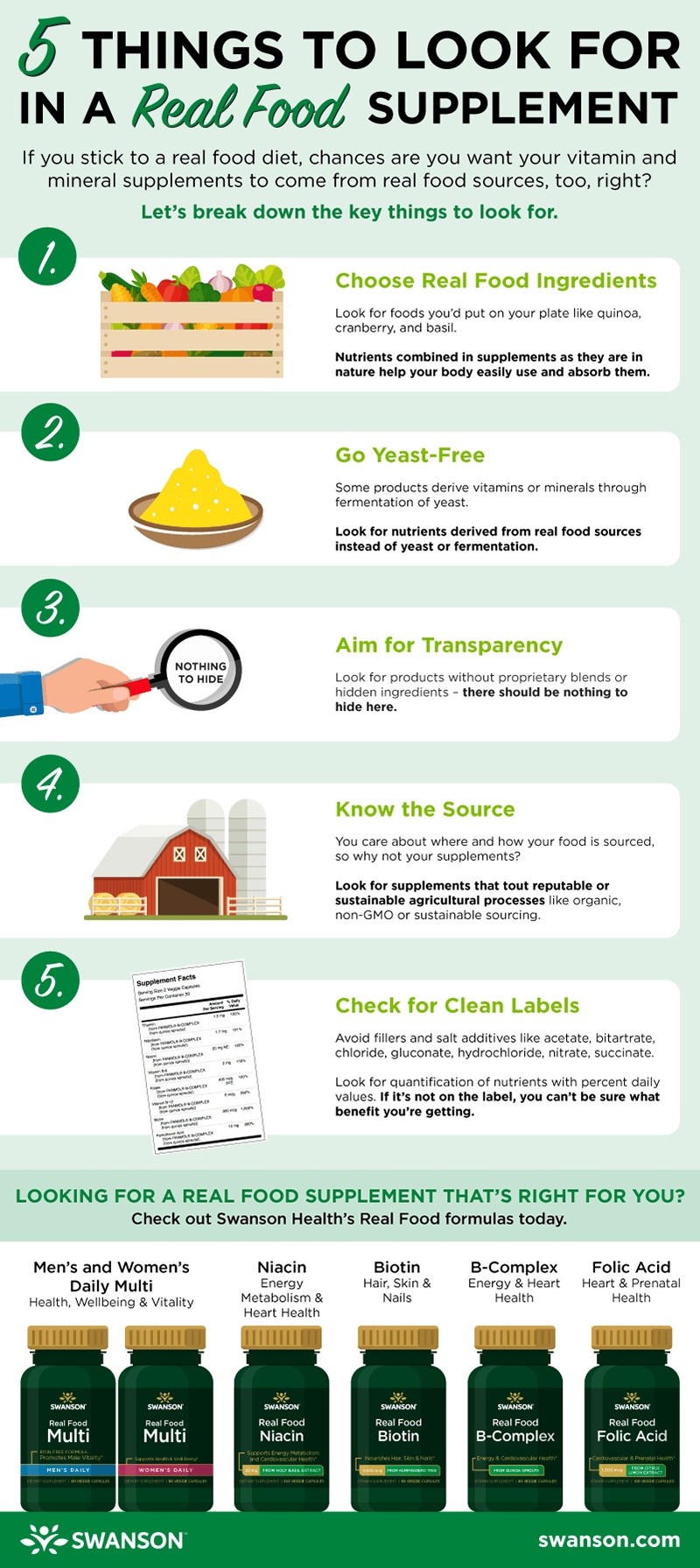
- Hone-In on Real Food Ingredients
If you try sticking to a real food diet, chances are that you want the supplements you put in your body to look like what you put on your plate. Look for supplements that source their ingredients from real foods. Think things like quinoa sprouts, cranberry extract and basil. You may encounter the term “ingredient synergy” when you hear about real food supplements. This is because many advocates for real food supplements support them due to the fact that their nutrients are often combined as they would be in natural foods, so your body can easily use and absorb them.
- Go Yeast-Free
If you were asked to choose between eating a handful of yeast, or a handful of quinoa sprouts, which would you choose? Chances are, you’d say quinoa sprouts, and we tend to agree. Some products derive their vitamins or minerals through a yeast fermentation process, and while this is a natural process, some argue it negates the real food basis. Look for products without yeast or fermentation, and for ones that derive their nutrition straight from the real food source instead.
- Aim for Transparency
If you’re looking for real foods, you should find just that: ingredient lists consisting of real foods. Look for products without proprietary blends or ingredients.
- Know the Source
Just as we care about where and how our food is sourced, we should care about how the food that goes into our supplements is sourced. Look for real food supplements sourced through reputable or sustainable agricultural processes by looking for things on the label like organic, non-GMO or sustainable sourcing.
- Check for Clean Labels
Real food means real labels. Look for products without fillers, additives or stability-enhancing salt additives, such as acetate, bitartrate, chloride, gluconate, hydrochloride, nitrate and succinate. Real food doesn’t have to mean unquantifiable nutrient amounts, either. Look for products that still quantify the vitamins and minerals you’re getting from real food. If you’re just consuming dehydrated food pill products, you can’t be sure what vitamin and mineral amount, or benefit, you’re actually receiving.
Real food matters, and it’s important to eat a nutrient-rich diet filled with whole foods. Everyone’s diet has nutrient gaps from time to time, sometimes due to food availability, diet choices, under consumption and even modern life getting in the way of our best intentions. In all of these cases, real food vitamin and mineral supplements can help fill those nutrient gaps.
Always serving our customers,
Your friends at Swanson
*These statements have not been evaluated by the Food and Drug Administration. These products are not intended to diagnose, treat, cure, or prevent any disease.
Sources
1. Less Than 3% of Americans Live a Healthy Lifestyle. MedicineNet. Read source
2. Can We Say What Diet Is Best for Health? Annual Review of Public Health. Read source
3. The Whole Foods Diet. WebMD. Read source
4. U.S. Department of Health and Human Services. Dietary Guidelines 2015-2020. See source
5. Protein. PsyPost. Read source
6. Cholecystokinin. National Library of Medicine. Read source
